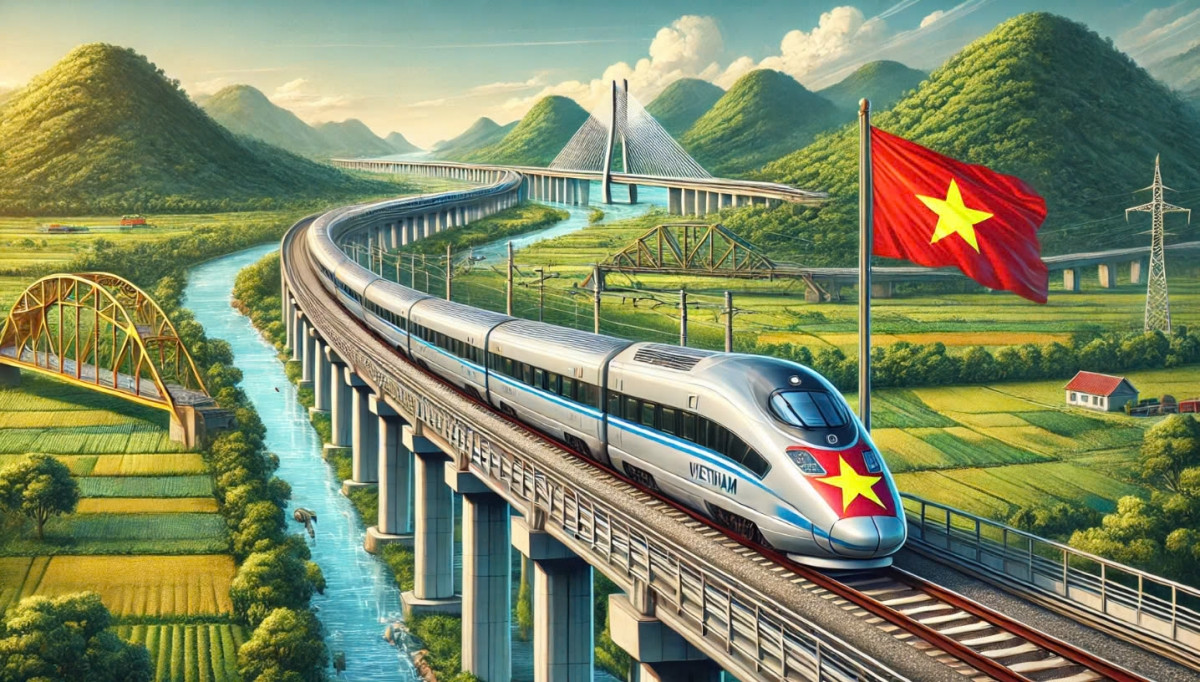
In the era of integration and sustainable development, modern transport infrastructure plays a vital role in national competitiveness. One of the strategic projects that is receiving special attention is the North-South high-speed railway using Japan’s Shinkansen technology. Not only does it have a breakthrough meaning in passenger transport, the project also opens up opportunities for comprehensive reform of the logistics industry – a sector that accounts for about 14 – 16% of Vietnam’s GDP but still has many limitations.
According to the feasibility study jointly conducted by the Ministry of Transport and the Japanese side, the North-South high-speed railway has a total length of 1,560 km, passing through 20 provinces and cities, with a total estimated investment of more than 58.7 billion USD. The design speed is up to 350 km/h, the average operating speed is 320 km/h, helping to shorten the travel time between Hanoi and Ho Chi Minh City to about 5 hours. The railway is expected to be built in two phases: the Hanoi – Vinh section and Ho Chi Minh City – Nha Trang section will be deployed first in 2032, with the entire line completed around 2045.
The impact of Shinkansen on the logistics industry is extremely profound. Currently, more than 70% of goods in Vietnam still depend on road transport – which is expensive and unstable. Meanwhile, railways currently account for less than 1% of the volume of transported goods. The high-speed railway system, if properly integrated with logistics centers, ICDs (inland container depots), seaports and airports, will help form a “high-speed logistics network” stretching from North to South.
With a transport speed 5-6 times faster than traditional freight trains and the ability to operate with almost absolute precision (the average delay rate of Japanese Shinkansen trains is less than 1 minute/year), this system will help significantly reduce storage costs, improve supply chain productivity, especially in areas requiring fast delivery such as e-commerce, pharmaceuticals, and electronic components.
In addition, when combined with green logistics solutions, high-speed railways will help reduce CO2 emissions, in line with Vietnam’s commitment to achieve net zero emissions by 2050. According to the Organization for Economic Cooperation and Development (OECD), rail transport generates greenhouse gas emissions only about 1/7 of that of roads per ton of cargo/km.
However, to maximize the benefits of Shinkansen, it is necessary to build a synchronous logistics infrastructure. Specifically, the planning of logistics centers must be linked to the high-speed railway network, applying digital technology in operations (AI, IoT), developing high-quality human resources and preferential policies to encourage businesses to switch from road transport to rail. In addition, learning from the Japanese standard logistics operation model – where delivery times are accurate to the minute – will be a valuable lesson for Vietnam.
In short, the Shinkansen project is not only an iconic transportation project but also a strategic “lever” to help the Vietnamese logistics industry reach new heights. If properly planned and invested, this will be a big step forward in the goal of turning Vietnam into a modern logistics center of Southeast Asia in the next few decades.


